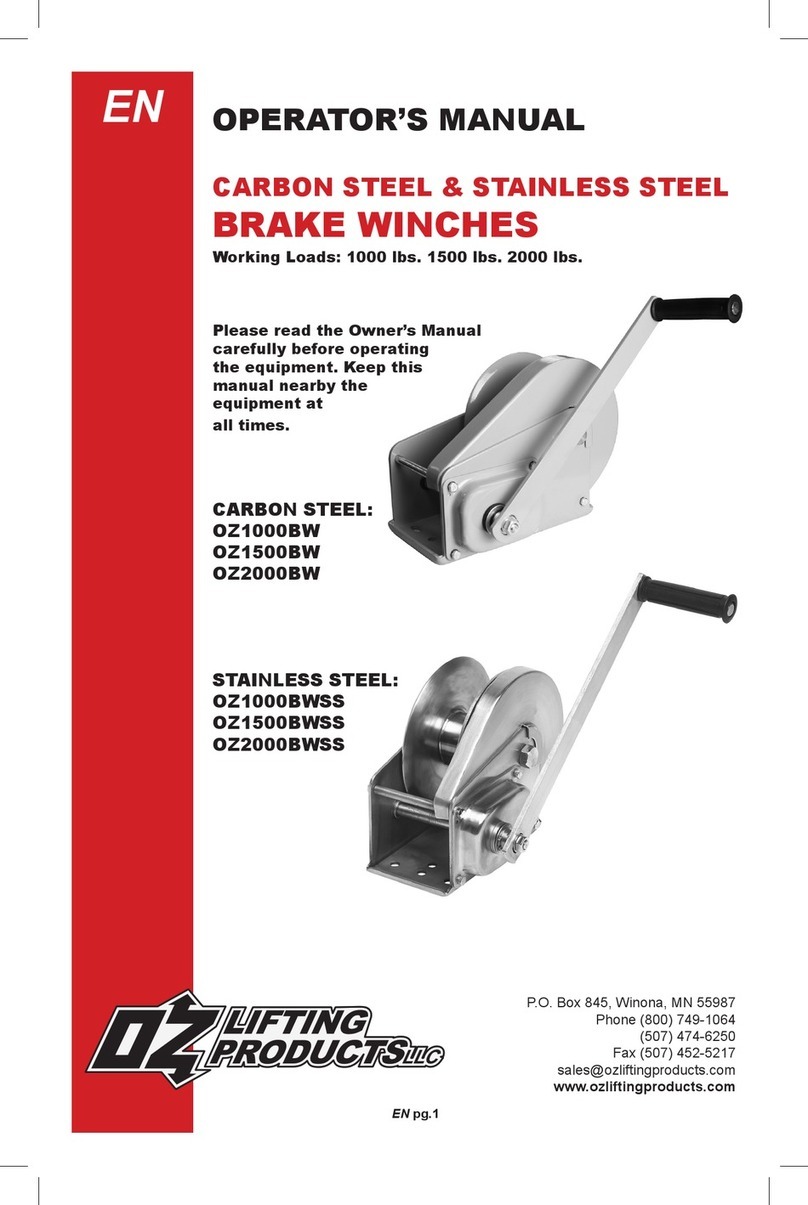
Take note of the following regarding inspections.
• Brakes require more than audible and visual inspection. Check daily by operating with and without a load,
stopping at various positions to ensure safe operation. If the load coasts or creeps contact the factory for
friction disc replacements.
• Proper inspection may require disassembly of some parts. Contact the factory before doing so or the
applicable warranty may be voided.
• For wire rope inspections please contact the specic manufacturer of the rope. The inspection provided in
the chart below is for a general inspection only and is in no way the complete inspection required.
• Before operation assure all deciencies on the inspection chart are resolved and inspections are up to
date. Refer to troubleshooting chart for further assistance.
Inspection Chart
Frequent Inspection (F) and Periodic Inspection (P)
Location Check For F P
General Paint chipping or excessive wear X
Damage, cracks, rust, dents excess wear, or corrosion. X
Unusual sounds X
Smooth load movements X
Winch lubricated X
Signs of overloading (cracks, dents, or damage) X
Proper function when operated with a load equal to the load rating X
Foundation Good condition/Supports the winch under all conditions X
Cracks, corrosion, damage X
Brake Assembly Ratchet pawl clicks rmly as handle is turned clockwise X
Proper operation X
Corrosion, cracks, damage, or wear X
Fasteners Firmly installed X
Properly tightened X
Stripped threads, bent, or damage (check by removing winch from the foundation) X
Gears, bearings, shafts Excess wear, cracks, corrosion, or damage X
Well lubricated X
Handle Rotates freely in both directions X
End Connections Corrosion, excess wear, rust, or damage X
Attached rmly X
Drum Excess wear or distortion of anchor hole X
Excess movement due to misaligned gears, bearings, shafts (check by moving the drum by hand) X
Load Hook Bent, twisted or damaged X
Hook latch doesn’t close when released X
Securely attached to wire rope with no fraying or damage to the rope X
Frame Bent, cracks, or damage (signs of overloading) X
Wire rope Installed correctly X
Wound tightly and evenly on drum X
No visible damage to entire rope X
Labels Not been removed, altered, or obscured (Contact factory for replacements) X
EN pg.10




























